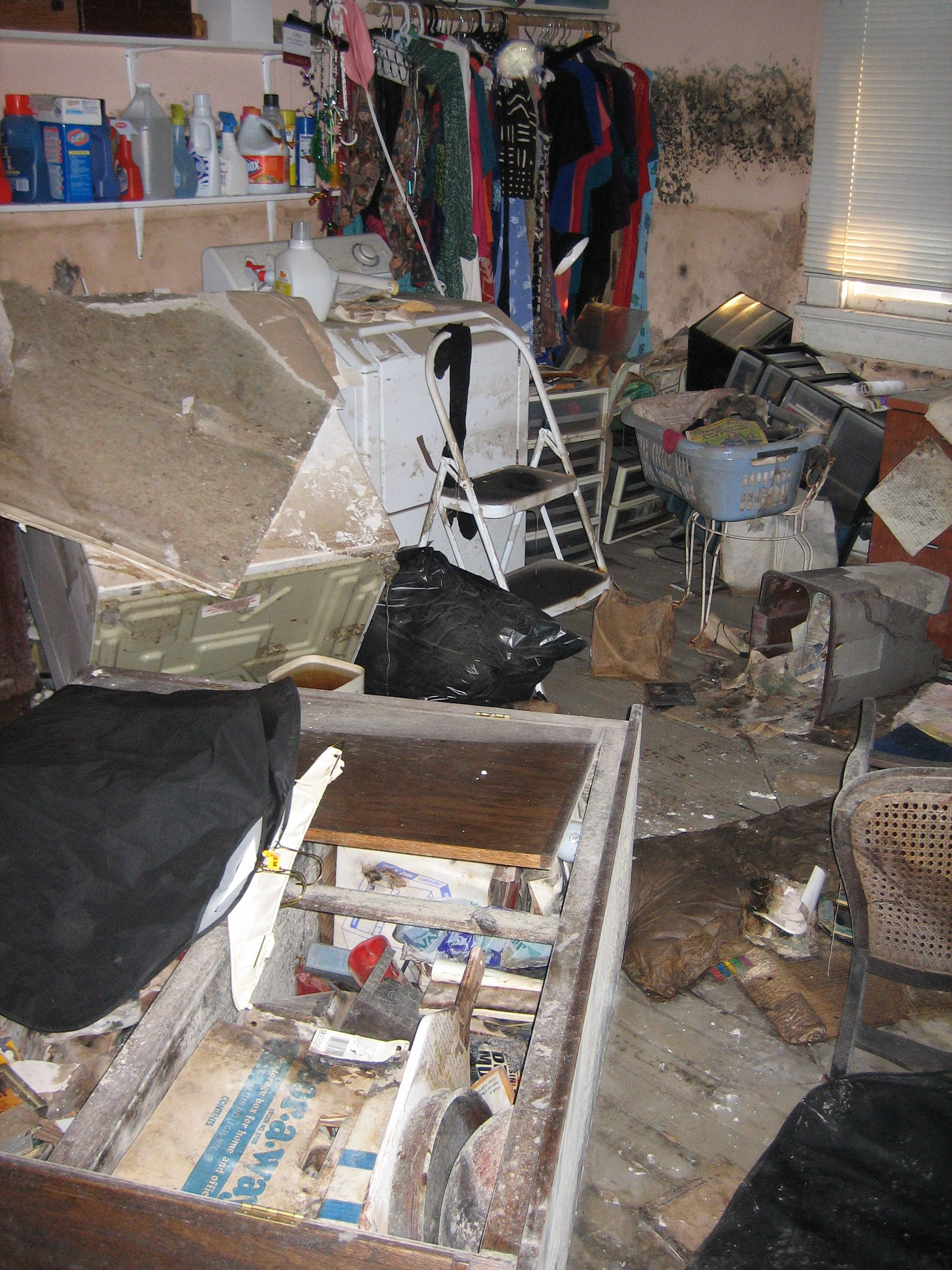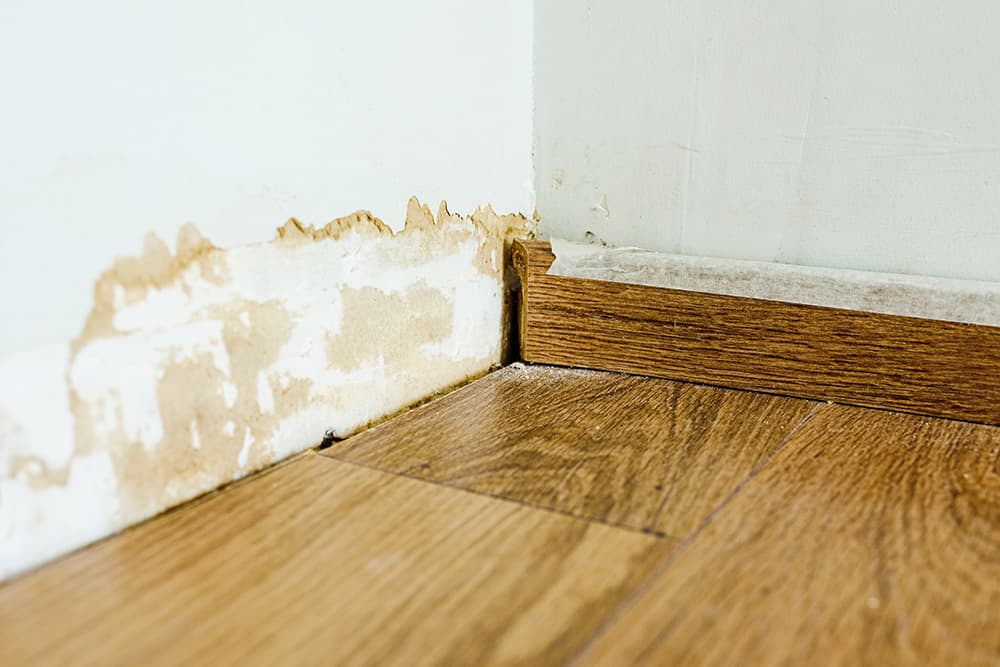Water Damage Cleanup Experts Offering Prompt and Efficient Solutions
Wiki Article
The Process of Water Damage Cleaning: Ensuring Your Home Is Restored Properly
Water damage can be a challenging obstacle for home owners, necessitating a organized and meticulous clean-up process to bring back safety and security and functionality. An extensive analysis is important to determine the degree of the damage and identify the appropriate remediation actions. Following this, efficient water removal methods play a crucial duty in alleviating further harm. The subtleties of drying out, disinfecting, and ultimate reconstruction are equally necessary and commonly forgotten. Understanding these phases can make a significant distinction in the end result of your home's repair, motivating a closer appearance at what each step involves.Examining the Damage
Upon uncovering water damage, the initial step is to thoroughly analyze the level of the effect. This preliminary assessment is important, as it aids identify the needed actions for effective clean-up and restoration. Begin by evaluating the influenced areas, consisting of walls, ceilings, floorings, and individual possessions, to determine the resource of the water breach, whether from flooding, leakages, or condensation.Recording the damages is crucial for both insurance policy cases and preparing remediation efforts - damage restoration services. Usage pictures and composed notes to record the seriousness of the damage, keeping in mind any kind of afflicted architectural elements and products. Pay unique attention to locations that might not be instantly visible, such as behind walls and under carpetings, as concealed dampness can bring about more complications, consisting of mold and mildew development
Additionally, assess the timeline of the water exposure. Ultimately, a thorough analysis lays the groundwork for a successful water damage cleaning procedure, making certain that all influenced areas are resolved properly and extensively.
Water Removal Strategies

Professionals usually employ completely submersible pumps for bigger volumes of water, which can swiftly alleviate flooding in basements or various other impacted areas. For smaller amounts, wet/dry vacuum cleaners are typically used to remove recurring moisture from rugs and difficult surfaces. Furthermore, making use of mobile extractors enables targeted elimination in restricted spaces or areas with fragile products.
In circumstances of infected water, such as sewage or floodwater, advanced extraction methods might involve using biohazard equipment to make certain safety and compliance with health guidelines. High-powered removal devices are crucial in reducing water retention in architectural products, which can cause mold development and structural deterioration otherwise addressed promptly.
Ultimately, the performance of water extraction techniques plays a pivotal duty in the total success of the water damage cleaning procedure, preparing for subsequent repair initiatives.
Drying and Dehumidification
Once standing water has been properly drawn out, the next crucial stage in the water damage clean-up procedure is drying out and dehumidification. This action is important to protect against more damage and mold growth, which can happen within 24 to 2 days in wet environments.To achieve effective drying, specific tools such as industrial-grade air movers and dehumidifiers is employed. Air moving companies flow air across damp surface areas, improving dissipation rates, while dehumidifiers minimize moisture levels airborne, advertising a conducive setting for drying. The mix of these tools ensures that dampness is drawn out from furnishings, wall surfaces, and floors, permitting them to completely dry thoroughly.
It is necessary to monitor the drying process carefully. Experts often utilize moisture meters to evaluate the dampness web content in different products, making sure that all influenced areas get to appropriate dry skin degrees. This thorough approach assists to stop hidden moisture pockets that might cause structural damage or harmful mold and mildew development.

Cleansing and Sanitizing
After the drying and dehumidification phase is total, the next crucial action in water damages clean-up is cleansing and sanitizing the affected locations. This procedure is crucial to avoid the development of mold and water extraction services mildew, microorganisms, and other pathogens that grow in damp atmospheres.The cleaning stage normally entails eliminating any kind of debris, dust, and contaminants from surfaces using specialized cleansing representatives. For tough surfaces, a combination of soap and water or business cleaning products is usually employed. Soft materials, such as upholstery and carpets, might require extra comprehensive cleaning techniques, consisting of vapor cleansing or deep removal techniques, to ensure detailed cleanliness.

Disinfecting adheres to cleansing, utilizing EPA-approved anti-bacterials to remove damaging bacteria. This action is essential, specifically in areas that might have entered into contact with floodwaters or sewage, as these sources can posture major health and wellness threats.
Additionally, it is essential to deal with any remaining odors, which may require using smell neutralizers or innovative strategies like ozone therapy. Appropriate cleansing and sterilizing not only restore the safety and hygiene of your home yet additionally prepared for effective repair and repair services in subsequent stages of the water damage cleaning procedure.
Repair and Repair Services

Once the analysis is full, remediation efforts can begin. This normally involves fixing or replacing broken materials, making certain that all work abides by regional structure codes and requirements. As an example, if drywall has actually been compromised, it will certainly need to be eliminated and changed with brand-new material. Furthermore, floor covering may need comparable attention, relying on the level of water exposure.
It is vital to engage skilled reconstruction experts throughout this process, as they possess the experience to manage intricate repair work efficiently. In addition, they can assist mitigate possible future issues, such as mold development or architectural instability, hence guaranteeing a risk-free and habitable living atmosphere. Ultimately, reliable remediation and fixings bring back the home's honesty and enhance its general worth.
Conclusion
Finally, the procedure of water damages cleaning is essential for recovering a home to its pre-damage problem. Each stage, from examining the damage to executing effective water removal strategies, complied with by complete drying, disinfecting, and necessary repairs, plays an important role in making certain safety and security and conformity with building criteria. Efficient execution of these actions not just reduces immediate damages however also boosts the long-lasting stability and value of the home.Water damage can be a daunting difficulty for homeowners, requiring a organized and meticulous clean-up procedure to restore security and functionality. Eventually, a thorough assessment lays the foundation for an effective water damage clean-up procedure, ensuring that all affected locations are resolved efficiently and completely.
Reliable water extraction strategies are important in alleviating damages and protecting against further issues adhering to a water intrusion event.In final thought, the procedure of water damages cleanup is vital for recovering a home to its pre-damage condition. Each phase, from examining the damages to carrying out reliable water extraction techniques, complied with by thorough drying out, sanitizing, and required fixings, plays a vital role in guaranteeing security and compliance with building requirements.
Report this wiki page